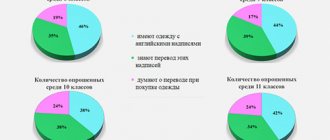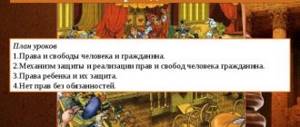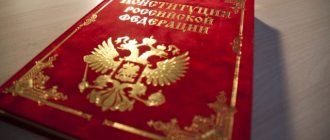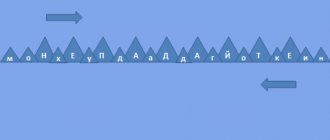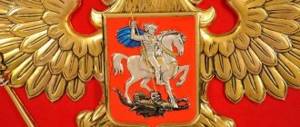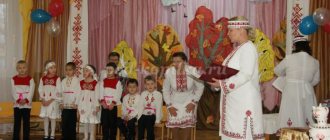Presentation “The Constitution of the Russian Federation. Fundamentals of the constitutional system"
#9th grade #Social studies #Teaching and methodological materials #Presentation #Subject teacher #School education
Constitution of the Russian Federation. Fundamentals of the constitutional system of the Russian Federation
Lesson Plan 1. What is a constitution? 2. Stages of development of the constitution. 3. Features of the Constitution of the Russian Federation. 4.Structure of the Constitution. 5.Fundamentals of the constitutional system of Russia.
Constitutional law is a branch of law that examines relations regulated by the constitution and the provisions of the constitution itself and constitutional laws.
Work in groups 1 group. Work through the material on the history of the development of the constitution. What are the dates of the adoption of the first constitutions in the world, the constitutions of our country. 2nd group. Find out what types of constitutions there are. 3rd group. What are the features of the Constitution of the Russian Federation?
Key concepts Constitution (lat. constitutio) - establishment, institution, structure. The Constitution of the Russian Federation is the fundamental law of the country, defining its social and governmental structure, the procedure and principles for the formation of representative bodies of power, the electoral system, and the fundamental rights and responsibilities of citizens.
Historical background “From the history of constitutions” The US Constitution was adopted on September 17, 1787 at the Constitutional Convention in Philadelphia.
The Declaration of the Rights of Man and the Citizen (French Constitution) was adopted by the National Constituent Assembly on August 26, 1789.
The first Constitution of the RSFSR was adopted on July 10, 1918 at the Fifth All-Russian Congress of Soviets
The Constitution of the USSR of 1924 is the first fundamental law of the Union of Soviet Socialist Republics; was approved by the Second Congress of Soviets of the USSR in January 1924.
"Stalinist" Constitution of 1936
The 1977 Constitution of the USSR was adopted on October 7, 1977. Operated until 1991.
On December 12, 1993, the Constitution of the Russian Federation was adopted by popular vote
1. Reinforces the foundations of the state system, fundamental rights and freedoms, determines the form of the state, the system of supreme bodies of state power. The difference between the Constitution and other laws: 1. It establishes the foundations of the state system, fundamental rights and freedoms, determines the form of the state, the system of supreme bodies of state power. 2. It is the main source of law and serves as the basis for current legislation. 3.Has supreme legal force. 4.It is stable. 5.Characterized by a special procedure for acceptance and change. 6. All articles of the Constitution have direct effect.
Preamble is an introductory, introductory part, which provides a brief description of the goals, conditions, and motives for the adoption of the Constitution. Structure of the Constitution of the Russian Federation Preamble - introductory, introductory part, which provides a brief description of the goals, conditions, and motives for the adoption of the Constitution. Main part (first section). Includes 9 chapters, 137 articles; Final and transitional provisions (section two)
Chapter 1 “Fundamentals of the constitutional system” (enshrines the principles defining the state and social system of Russia) The structure of the main part of the Constitution of the Russian Federation Chapter 1 “Fundamentals of the constitutional system” (enshrines the principles defining the state and social system of Russia) Chapter 2 “Rights and freedoms of man and citizen "(establishes the general principles of the legal status of individuals in our country) Chapter 3 “Federal structure” (defines the territory and composition of Russia as a federal state)
Chapter 4. “President of the Russian Federation” (defines the powers of the president as the head of the Russian state). Chapter 4. “President of the Russian Federation” (defines the powers of the president as the head of the Russian state). Chapter 5. “Federal Assembly” (the highest representative and legislative body in the country). Chapter 6. “Government” (supreme executive body). The structure of the main part of the Constitution of the Russian Federation
Chapter 7. “Judicial Power” (establishes the fundamental principles of the administration of justice and the basis for the organization of the judicial system and prosecutorial authorities). Chapter 7. “Judicial Power” (establishes the fundamental principles of the administration of justice and the basis for the organization of the judicial system and prosecutorial authorities). Chapter 8. “Local self-government” (establishes the fundamental principles of the organization of local self-government). Chapter 9. “The procedure for changing the Constitution” (determines the procedure for changing the Constitution, introducing amendments to it or radically revising it). The structure of the main part of the Constitution of the Russian Federation
Universal human values and goals proclaimed in the preamble of the Constitution of the Russian Federation: 1. democracy, 2. moral, 3. state unity, 4. patriotism, 5. international cooperation, 6. social peace.
The main goal of the Constitution Man, his rights and freedoms are the highest value. Recognition, observance and protection of human rights and freedoms.
The objectives of the Constitution are to consolidate and guarantee fundamental human rights; streamline state power; establish justice.
The constitutional system of Russia is the social system and structure of the state enshrined in the constitution.
The constitutional system of Russia is the principles that serve as the basis for the entire system of social relations established in our country by the Constitution
Principles of the constitutional system • man, his rights and freedoms are the highest value (Article 2), which obliges the state to recognize, respect and protect the rights and freedoms of man and citizen; • the sovereignty of its multinational people (Article 3), which means the supremacy of people’s power, the right of the people to be the bearer of sovereignty and the only source of power in the Russian Federation; • state sovereignty of the Russian Federation (Article 4), meaning that state power in the Russian Federation is united, supreme and independent;
Principles of the constitutional system • federalism (Article 5), ensuring the state integrity of Russia and the delimitation of jurisdiction and powers between the state authorities of the Russian Federation and the state authorities of the constituent entities of the Russian Federation; • separation of powers into legislative, executive, judicial (Article 10), meaning that the legislative, executive, and judicial authorities “restrain” each other, preventing the concentration of power in the hands of one body; • Russia is a social state (Article 7). This principle establishes the social responsibility of the state for meeting the needs of members of society and creating conditions that ensure a decent life and free development of people;
Principles of the constitutional system • establishment of a market economy. This is manifested in the recognition and protection of various forms of property, private, state, municipal and others (Articles 8,9); • ideological and political diversity (Article 13). Their essence is that no ideology in Russia can be proclaimed as state or mandatory and recognition of a multi-party system; • Russia is a Soviet state. This means that in Russia it is not allowed to establish any religion as a state or compulsory religion; religious associations are separated from the state and are equal before the law (Article 14).

